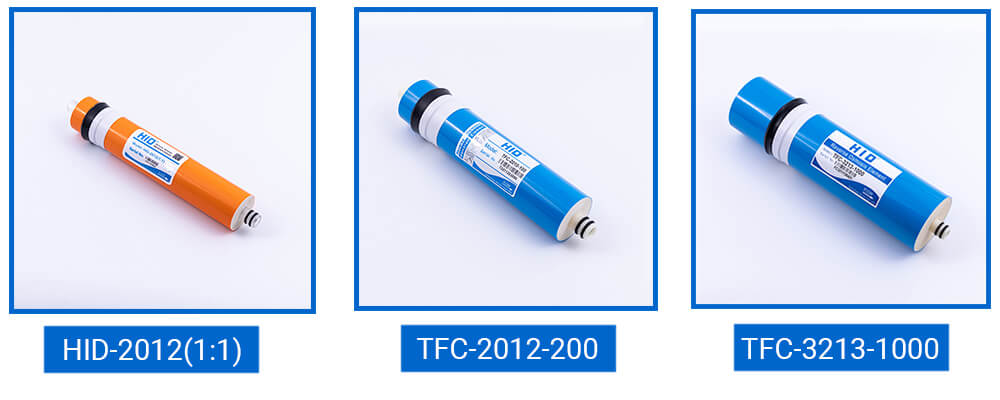Reverse osmosis (RO) refers to a technology that purifies water by pushing it through a semi-permeable membrane under high pressure. The RO membrane is a thin layer of filtering material that separates contaminating agents and dissolved salts from drinking water. It consists of three layers, namely a polyester support web, a micro-porous polysulfone interlayer and an ultra-thin polyamide barrier layer. These membranes can be used in both industrial processes and for obtaining potable water. Nowadays, they are increasingly being used across the globe for water purification, as the RO process offers an environment-friendly and cost-effective alternative to the conventionally used techniques such as distillation. But people haven’t fully get used to the terms used and fully understand the difference between types of ro membranes.
In today’s article, we are going to briefly share some of the mainly used terms and how differences between RO membranes. The HID membranes are categorized by membrane type, membrane use, size, and performance. On our website, the membrane is mainly classified into three categories using the membrane (GPD). We classify our ro membranes according to the application system sizes and their GDP range. For residential ro membranes at HID, the GPD range of 50 - 200 and can handle pressure range of 65psi to a maximum of 200psi. We have wide models or these membranes and you can check our unit from our website. These membranes are suitable and recommended to use in small ro household systems. because of their low-pressure range and gpd levels.

For commercial ro membranes at HID, the GPD range of 200 - 1000 and can handle a pressure range of 65psi to a maximum of 200psi. We also have a wide model for these membranes. These membranes are suitable for use in public places or office buildings, hospitalss, schools, factories, laboratories because the GPD for these membranes is a higher capacity than residential ones. They are usually used for desalination of surface water, groundwater, tap water, brackish with salinity under 2000ppm. The third group is the industrial membranes, these are big in size, GPD, and are designed for big systems. From 780 - 11000 gallons a day, these can be used for desalination of seawater and high concentration brackish water and can handle a pressure range of 150psi to a maximum 600psi. We will share more detailed information for each category in our next article.
The key terms used in the reverse osmosis
Recovery - the percentage of membrane system feed water that emerges from the system as product water or “permeate”.
Rejection - the percentage of solute concentration removed from system feed water by the membrane.
Passage - the opposite of “rejection”, the passage is the percentage of dissolved constituents (contaminants) in the feed water allowed to pass through the membrane.
Flow - Feed flow is the rate of feed water introduced to the membrane element or membrane system, usually measured in gallons per minute (gpm).
Concentrate flow - is the rate of flow of non-permeated feed water that exits the membrane element or membrane system.
Flux - the rate of permeate transported per unit of membrane area, usually measured in gallons per square foot per day (gfd)or liters per square meter and hour (L/m2h).
Permeate - the purified product water produced by a membrane system.
Total Dissolved Solids (TDS) - usually expressed as mg/lor ppm (parts per million).
Post time: Nov-29-2021




